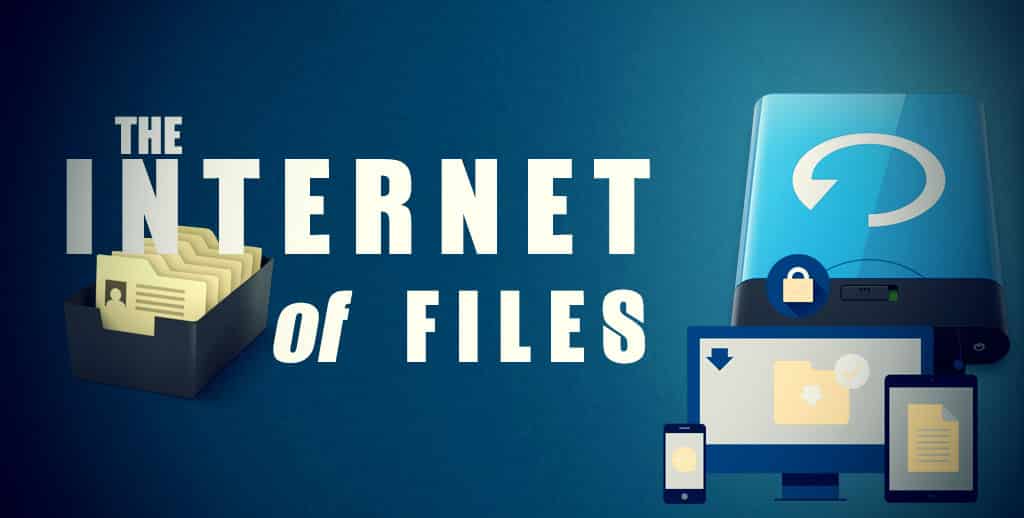Making the “Internet of Files” Work for Today’s Business

With all the talk around the Internet of Things (IoT), one has to wonder what all the hype is about. While the aggregate amount of structured data generated by the IoT can reach Exabytes, it is unstructured data such as presentations, collateral, audio/video files, and more that is the real king of volume. In fact, according to IDC, unstructured content accounts for as much as 90 percent of all digital data. IDC also notes that if companies can figure out better ways to properly collect, synthesize and use unstructured data, they can improve their bottom line, reduce costs and respond more rapidly to market demands.
Exacerbating the unstructured data conundrum is today’s growing mobile workforce. IDC estimates that 75% of the US workforce is already mobile, and in 2015 we will see 1.3 billion mobile workers worldwide. This creates massive requirements for remote file access and remote office connectivity as mobile workers try to access their unstructured files – reports, contracts, presentations, and more – from multiple device they have on hand.
These unstructured files are creating dramatic new requirements for the effective use of those files, making today’s data landscape more like the “Internet of Files” (IoF) rather than the Internet of Things. As such, secure file access and sharing in the IoF era has become more critical than ever.
Where Traditional File Access Falls Short
Traditionally, businesses have used Virtual Private Network (VPN) and File Transfer Protocol (FTP) technologies to access business files when working remote. However these approaches are slow and can limit file access, frustrating workers. Connection reliability is often lacking, and deployment complexity, network availability and lack of strong security functionality create further challenges. If your mobile workers are out-of-network, they’re also out-of-luck.
Cloud-based sync and share solutions are popping up – in some cases like wild fire – to solve remote access. These services can enable remote access to company content via mobile devices and also update selected devices as needed, syncing them with current file content. Yet, despite file sync and share’s growing popularity, challenges remain. It is often very difficult to perform migrations for high volumes of content on file servers – and as we already know, high volumes of content are the norm.
Volume file server sync operations can impact LAN performance, which frustrates end-users working in the office. Furthermore, many cloud-only file sync solutions require migrating file structures and do not support file locking to prevent overwrites. Finally, cloud sync solutions also give rise to increasing security gaps and questions around data sovereignty for organizations that operate globally and are unsure where their data is being retained. This is increasingly true when consumer-grade file sync and share solutions, such as Dropbox and Google Drive, are used for business, creating even greater risks when storing data that’s outside of IT’s control.
Powering the Internet of Files with Cloud-Enabled File Servers
There’s a new breed of technology that is rising to meet the file sharing and collaboration demands of today’s mobile workforce in the IoF era. Here, traditional file servers, which can include network attached storage devices, are integrated seamlessly to the cloud providing mobile and remote access, while retaining existing file structures and policies for LAN users.
Company employees, virtual teams and authorized parties can securely access the files they need, when and where they need it, and changes are automatically synced across the appropriated user devices and company file servers without intervention. As a result, everyone – including mobile workers and remote offices – has access to the most current versions of files, which are securely protected, retained and archived with greater efficiency and recoverability.
How does this impact business productivity? Consider the following four use cases:
- Remote Office Connectivity – cloud-based file server technologies enable businesses to better manage the data produced by remote and local office workers. Servers can be automatically synced, without requiring VPN or complex infrastructure. Remote and branch locations also benefit from fast performance and are able to quickly access and share important documents. Without the reliance on VPN, synced files are also accessible locally, even in the event of network failure.
- Mobile File Access – cloud-based file server technologies also better enable the mobile worker by delivering remote, anytime/anywhere access to files, documents and folders. Users can selectively sync their devices with just the content they want, to better optimize the storage capacities on smaller devices while still having the instant access they need. It will also allow for workers to actually work on files from their devices – rather than only view them – with mobile editing technology that will automatically update the file server once editing is complete. And, finally mobile users can be assured of stringent device security features to further protect valuable business content with features such as “remote wipe,” which can eliminate business data from a mobile device should it become lost or compromised.
- Backup, Versioning and Recovery – cloud-based file server technologies also support the very critical requirement of backup, versioning and recovery. This alone can deliver instant ROI for these solutions, as it can replace other costly products used for remote file backup. It gives the business the vital advantage of off-premise backup for simplified recovery in the event of a disaster and an easier way to archive company data to meet corporate policies or compliance. As a result, organizations see significant cost reduction by accomplishing multiple critical processes in a single solution.
- Endpoint Backup – often, remote backup policies omit automatically backing up endpoint devices. But with a cloud sync solution, company files will be automatically backed – from laptops, desktops, and even mobile devices. And in the event of endpoint loss or theft, remotely wiped content can easily be restored from the backup. This provides the valuable endpoint data recovery that so many organizations are missing from their data protection strategy.
With improved access to valuable company information, workers are more productive and businesses have deeper insight into the valuable data it produces – across the entire organization. As a result, organizations are able to truly put the “Internet of Files” to work for them, while lowering costs, ensuring business continuity and giving workers the productivity-enhancing technology they crave. So, as the volume of unstructured data grows – and it most surely will – businesses are better prepared with the technology they need to power their workers into the next era.
(Writing by Sam Liu, Editing by Olga Solovyov, Managing Director Talent Acquisition at CEOWORLD Magazine Jobs and Victoria Adams)
Sam Liu is the vice president of marketing for Soonr with over 20 years of experience in mobile, cloud and enterprise solutions. He holds a bachelor’s degree in Computer Science and an MBA.
Bring the best of the CEOWORLD magazine's global journalism to audiences in the United States and around the world. - Add CEOWORLD magazine to your Google News feed.
Follow CEOWORLD magazine headlines on: Google News, LinkedIn, Twitter, and Facebook.
Copyright 2025 The CEOWORLD magazine. All rights reserved. This material (and any extract from it) must not be copied, redistributed or placed on any website, without CEOWORLD magazine' prior written consent. For media queries, please contact: info@ceoworld.biz











